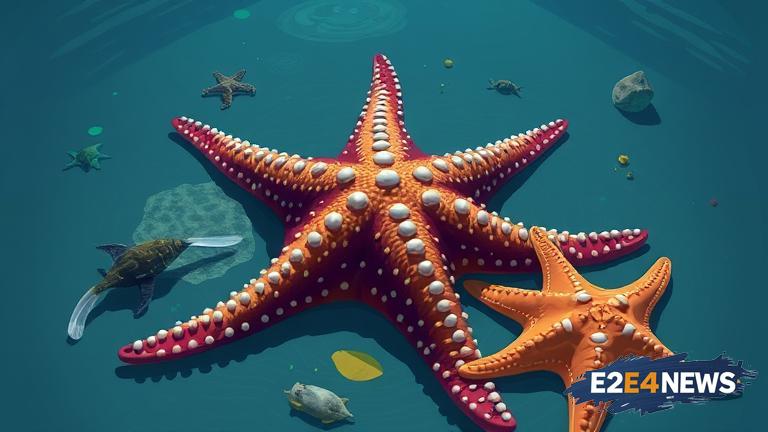In a groundbreaking study, researchers have identified the primary cause of the massive sea star die-off that occurred off the Pacific Coast, a phenomenon that has puzzled scientists for years. The die-off, which was first reported in 2013, resulted in the loss of an estimated 5 billion sea stars, leaving many to wonder about the potential long-term effects on the marine ecosystem. According to the study, the primary culprit behind the die-off was a combination of factors, including rising ocean temperatures, disease, and changes in ocean chemistry. The researchers found that the sea stars were particularly vulnerable to a disease known as sea star wasting disease, which was exacerbated by the warmer waters. As the ocean temperatures continued to rise, the sea stars’ immune systems were weakened, making them more susceptible to the disease. The study also revealed that the die-off was not limited to a single species, but rather affected a wide range of sea star species. The researchers used a combination of field observations, laboratory experiments, and statistical modeling to reach their conclusions. The study’s findings have significant implications for our understanding of the impacts of climate change on marine ecosystems. The loss of sea stars can have cascading effects on the entire ecosystem, as they play a crucial role in maintaining the balance of the marine food chain. Without sea stars, other species such as mussels and clams may experience population explosions, leading to changes in the composition of the ecosystem. The study’s authors note that the die-off is a stark reminder of the urgent need to address climate change and its impacts on marine ecosystems. The researchers also highlight the importance of continued monitoring and research to better understand the complex interactions within marine ecosystems. The study’s findings have been met with interest and concern from the scientific community, with many experts calling for further research into the impacts of climate change on marine ecosystems. The die-off has also raised concerns about the potential for similar events to occur in the future, highlighting the need for proactive conservation efforts. In response to the study’s findings, conservation organizations are calling for increased protection of marine habitats and the implementation of measures to reduce the impacts of climate change. The study’s authors emphasize that the solution to the problem will require a collaborative effort from scientists, policymakers, and the general public. The researchers also note that the study’s findings have significant implications for the management of marine ecosystems, highlighting the need for a more integrated approach to conservation. The study’s results are expected to inform the development of new conservation strategies, aimed at protecting marine ecosystems from the impacts of climate change. The researchers are now working to develop new models that can predict the likelihood of similar die-offs occurring in the future. The study’s findings are a significant step forward in our understanding of the complex interactions within marine ecosystems, and highlight the urgent need for action to protect these critical ecosystems. The die-off has also raised questions about the potential for other marine species to be affected by climate change, highlighting the need for further research into the impacts of climate change on marine ecosystems. The study’s authors note that the die-off is a stark reminder of the importance of preserving biodiversity in marine ecosystems. The researchers are now working to develop new conservation strategies, aimed at protecting marine ecosystems from the impacts of climate change. The study’s findings have significant implications for the management of marine ecosystems, highlighting the need for a more integrated approach to conservation.
